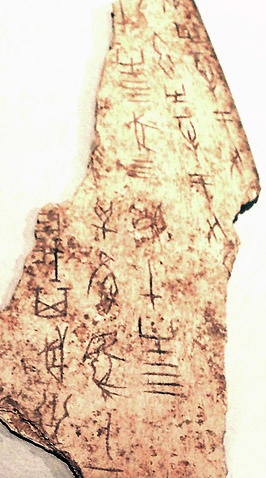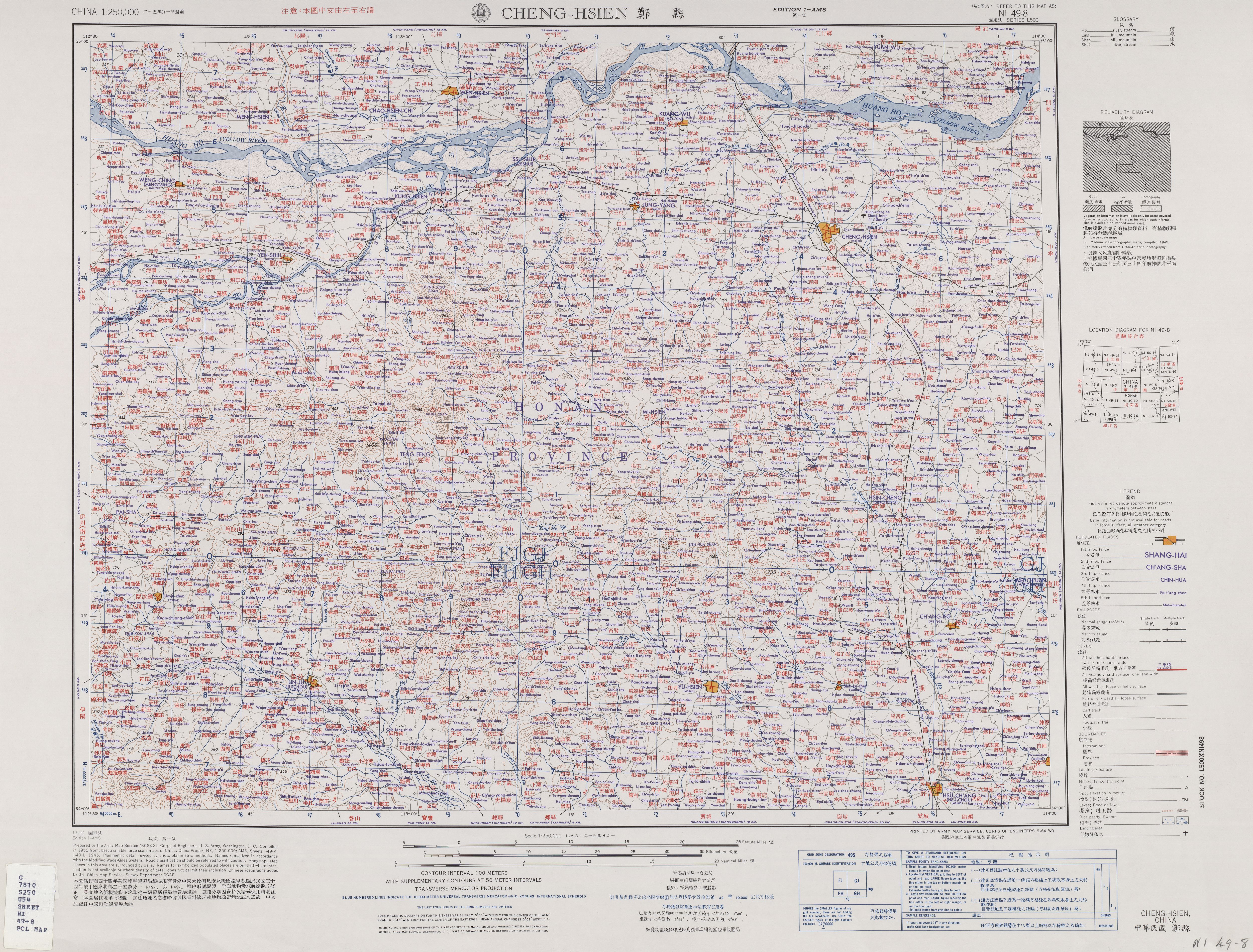|
Xuchang
Xuchang ( zh, s=, t= ; postal: Hsuchang) is a prefecture-level city in central Henan province in Central China. It is bordered by the provincial capital of Zhengzhou to the northwest, Kaifeng to the northeast, Zhoukou to the east, Luohe to the southeast, and Pingdingshan to the southwest. Its population was 4,307,488 inhabitants at the final 2010 census, of whom 1,952,666 lived in the built-up (or "metro") area made up of Weidu and Jian'an districts (named from Emperor Xian of Han’s era name) and Changge City largely being urbanized. In 2007, the city was named as one of China's top ten livable cities by Chinese Cities Brand Value Report, which was released at 2007 Beijing Summit of China Cities Forum. Administration The prefecture-level city of Xuchang administers 2 districts, 2 county-level cities and 2 counties. * Weidu District () * Jian'an District () * Yuzhou City () * Changge City () * Yanling County () * Xiangcheng County () History During the early ... [...More Info...] [...Related Items...] OR: [Wikipedia] [Google] [Baidu] [Amazon] |
Henan
Henan; alternatively Honan is a province in Central China. Henan is home to many heritage sites, including Yinxu, the ruins of the final capital of the Shang dynasty () and the Shaolin Temple. Four of the historical capitals of China, Luoyang, Anyang, Kaifeng and Zhengzhou, are in Henan. While the province's name means 'south of the river', approximately a quarter of the province lies north of the Yellow River. With an area of , Henan covers a large part of the fertile and densely populated North China Plain. Its neighboring provinces are Shaanxi, Shanxi, Hebei, Shandong, Anhui, and Hubei. Henan is China's third-most populous province and the most populous among inland provinces, with a population of over 99 million as of 2020. It is also the world's seventh-most populous administrative division; if it were a country by itself, Henan would be the 17th-most populous in the world, behind Egypt and Vietnam. People from Henan often suffer from regional discrimination ... [...More Info...] [...Related Items...] OR: [Wikipedia] [Google] [Baidu] [Amazon] |
Weidu District
Weidu () is a district of the city of Xuchang, Henan province, China, named for Xuchang having been the capital of the Cao Wei () state during the Three Kingdoms The Three Kingdoms of Cao Wei, Shu Han, and Eastern Wu dominated China from AD 220 to 280 following the end of the Han dynasty. This period was preceded by the Eastern Han dynasty and followed by the Jin dynasty (266–420), Western Jin dyna ... period (220-280 AD). Administrative divisions As of 2012, this county is divided to 12 subdistricts. ;Subdistricts References County-level divisions of Henan Xuchang {{Henan-geo-stub ... [...More Info...] [...Related Items...] OR: [Wikipedia] [Google] [Baidu] [Amazon] |
Yanling County, Henan
Yanling County () is a county in the central part of Henan province, China. It is the easternmost county-level division of the prefecture-level city of Xuchang. History Human habitation of the area began around 6000 BC. In the early Zhou dynasty, the area became the state of Yan (). In the Eastern Zhou dynasty, the area became known as ''Yan Yi'' () after the destruction of the state of Yan under Duke Wu of Zheng () in the early part of the reign of King Ping of Zhou (after 770 BC). In the fifth month of 722 BC, Duke Zhuang of Zheng defeated his younger brother Gongshu Duan () north of present-day Yanling County. The famous Battle of Yanling (575 BC) took place in Yanling County. Yanling County was established during the Western Han dynasty in the year 201 BC. In 2014, six men in Yanling County were fined 2,000 yuan each for their roles in catching 1,689 wild geckos in Zhangqiao. Administrative divisions The county is made up of twelve towns: Towns: *Anling (), Malan ( ... [...More Info...] [...Related Items...] OR: [Wikipedia] [Google] [Baidu] [Amazon] |
Jian'an District
Jian'an District (), formerly Xuchang County () is a district of the prefecture of Xuchang in Henan Province, China. The district is named for Jian'an, a famous Chinese era during the reign of Emperor Xian, the last emperor of the Han dynasty A dynasty is a sequence of rulers from the same family, usually in the context of a monarchy, monarchical system, but sometimes also appearing in republics. A dynasty may also be referred to as a "house", "family" or "clan", among others. H .... Administrative divisions As of 2012, this district is divided to 7 towns, 8 townships and 1 ethnic township. ;Towns ;Townships ;Ethnic townships * Aizhuang Hui Township () References County-level divisions of Henan Xuchang {{Henan-geo-stub ... [...More Info...] [...Related Items...] OR: [Wikipedia] [Google] [Baidu] [Amazon] |
Xiangcheng County, Henan
Xiangcheng County () is a county in the central part of Henan province, China. It is located in the southwest of the prefecture-level city of Xuchang, and is its southernmost county-level division The administrative divisions of China have consisted of several levels since 1412, due to mainland China's large population and geographical area. In the People's Republic of China, the constitution provides for three levels of government. Ho .... Administrative divisions As of 2012, this county is divided to 6 towns, 1 ethnic town and 9 townships. ;Towns ;Ethnic towns *Yingqiao Hui Town () ;Townships Climate References County-level divisions of Henan Xuchang {{Henan-geo-stub ... [...More Info...] [...Related Items...] OR: [Wikipedia] [Google] [Baidu] [Amazon] |
Changge
Changge () is a county-level city under the administration of the prefecture-level city of Xuchang, in the central part of central Henan Province, China. In the Han dynasty, it was known as Changshe (). It ranges in latitude from 34° 09' to 34° 20'N and longitude from 113° 34' to 114° 08'E."Changge." Accessed June 9, 2014. According to the sixth national population census in 2010, Changge's population is about 687,081."the sixth national population census of Xuchang." Accessed June 9, 2014. [...More Info...] [...Related Items...] OR: [Wikipedia] [Google] [Baidu] [Amazon] |
Yuzhou City
Yuzhou ( zh, s=禹州, w=Yü-chou, p=Yǔzhōu) is a county-level city in the central part of Henan, People's Republic of China. Yuzhou City, referred to as "Jun", was called Yangzhai, Junzhou and Yingchuan in ancient times, and also called Xiadu, Jundu and Medicine Capital. It occupies the northwest corner of the prefecture-level city of Xuchang. The city is named for Yu the Great, the founder of the Xia Dynasty, which the city's government claims was founded in present-day Yuzhou, and that the dynasty's capital was located in present-day Yuzhou. There is a statue of Yu the Great in Yuzhou, and he serves as a symbol of the city. The famous Jun ware () of porcelain originates in Yuzhou, specifically, in the town of (). Jun ware comprises one of the Five Great Kilns, a group of highly esteemed porcelain types from the Song dynasty. Yuzhou has historically served as a major center of traditional Chinese medicine, and the city's historic medicinal tradition has been recognized by th ... [...More Info...] [...Related Items...] OR: [Wikipedia] [Google] [Baidu] [Amazon] |
Zhengzhou
Zhengzhou is the capital of Henan, China. Located in northern Henan, it is one of the nine National central city, national central cities in China, and serves as the political, economic, technological, and educational center of the province. The Zhengzhou metropolitan area (including Zhengzhou and Kaifeng) is the core area of the Central Plains Economic Zone. The city lies on the southern bank of the Yellow River. Zhengzhou is a major hub of China's domestic and international transportation network; for example, it is connected to Europe and has an international airport. Zhengzhou is a National Civilized City and a List of National Famous Historical and Cultural Cities in China, State-list Famous Historical and Culture City. As of 2020, there are two List of World Heritage Sites in China, World Cultural Heritage Sites in Zhengzhou. The Zhengzhou Commodity Exchange (ZCE) is China's first futures exchange. Zhengzhou Airport Economy Zone is China's first Airport Economy Zone. As o ... [...More Info...] [...Related Items...] OR: [Wikipedia] [Google] [Baidu] [Amazon] |
County-level City
A county-level city () is a County-level divisions of China, county-level administrative division of the China, People's Republic of China. County-level cities have judiciary, judicial but no legislature, legislative rights over their own local ordinance, local law and are usually governed by Administrative divisions of China#Prefectural level (2nd), prefecture-level divisions, but a few are governed directly by Administrative divisions of China#Provincial level (1st), province-level divisions. A county-level city is a "city" () and "county" () that have been merged into one unified jurisdiction. As such, it is simultaneously a city, which is a municipal entity, and a county, which is an administrative division of a prefecture. Most county-level cities were created in the 1980s and 1990s by replacing denser populated Counties of China, counties. County-level cities are not "city, cities" in the strictest sense of the word, since they usually contain rural areas many times the size ... [...More Info...] [...Related Items...] OR: [Wikipedia] [Google] [Baidu] [Amazon] |
Emperor Xian Of Han
Emperor Xian of Han (2 April 181 – 21 April 234), personal name Liu Xie (劉協), courtesy name Bohe, was the 14th and last Emperor of China, emperor of the Han dynasty#Eastern Han (25–220 AD), Eastern Han dynasty of China. He reigned from 28 September 189 until his abdication and subsequent End of the Han dynasty, end of the dynasty on 11 December 220. Liu Xie was a son of Emperor Ling of Han, Liu Hong (Emperor Ling) and was a younger half-brother of his predecessor, Liu Bian (Emperor Shao). In 189, at the age of eight, he became emperor after the warlord Dong Zhuo, who had seized control of the Han central government, deposed Emperor Shao and replaced him with Liu Xie. The newly enthroned Liu Xie, historically known as Emperor Xian, was in fact a puppet ruler under Dong Zhuo's control. In 190, when a coalition of regional warlords launched a punitive campaign against Dong Zhuo in the name of freeing Emperor Xian, Dong Zhuo ordered the destruction of the imperial capital, L ... [...More Info...] [...Related Items...] OR: [Wikipedia] [Google] [Baidu] [Amazon] |
Kaifeng
Kaifeng ( zh, s=开封, p=Kāifēng) is a prefecture-level city in east-Zhongyuan, central Henan province, China. It is one of the Historical capitals of China, Eight Ancient Capitals of China, having been the capital eight times in history, and is most known for having been the Chinese capital during the Song dynasty#Northern Song, 960–1127, Northern Song dynasty. As of the 2020 Chinese census, 2020 census, 4,824,016 people lived in Kaifeng's Prefecture, of whom 1,735,581 lived in the metropolitan area consisting of Xiangfu, Longting, Shunhe Hui, Gulou and Yuwantai Districts. Located along the Yellow River's southern bank, it borders the provincial capital of Zhengzhou to the west, Xinxiang to the northwest, Shangqiu to the east, Zhoukou to the southeast, Xuchang to the southwest, and Heze of Shandong to the northeast. Kaifeng is a major city for scientific research, appearing among the world's top 200 List of cities by scientific output, cities by scientific output as track ... [...More Info...] [...Related Items...] OR: [Wikipedia] [Google] [Baidu] [Amazon] |








